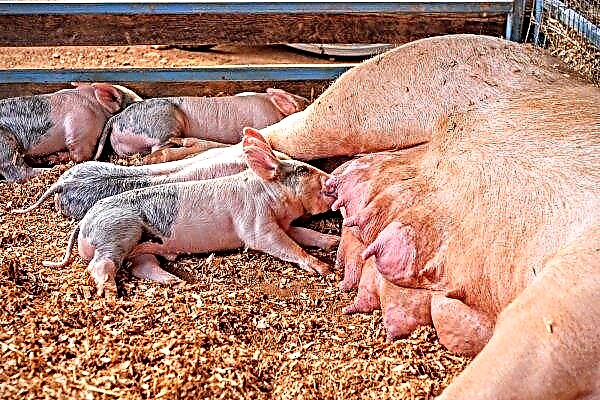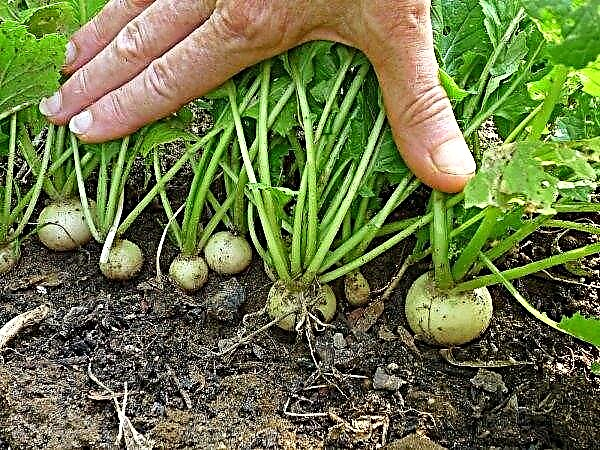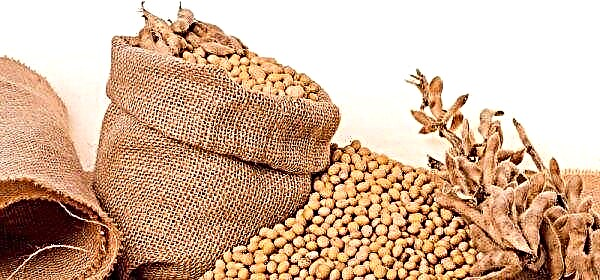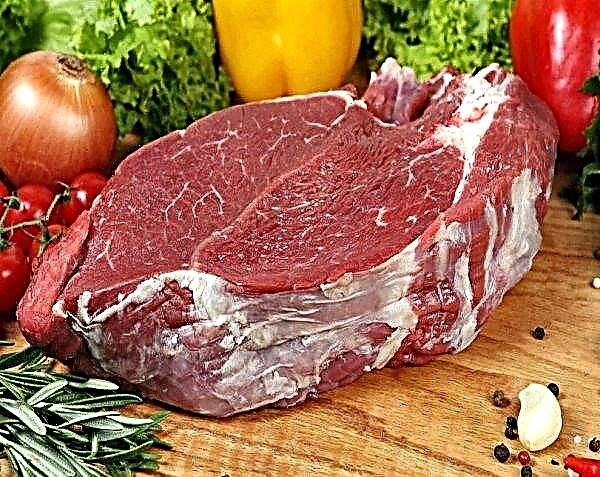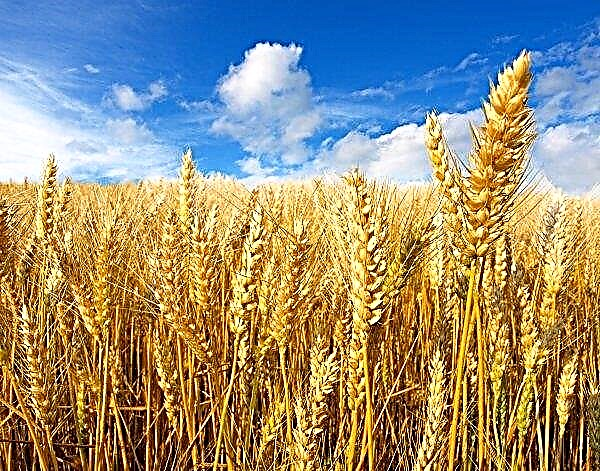To answer the question about the benefits and advantages of one grain over another, you need to compare them. The same applies to products that can be prepared from them. In the article you will find information about the benefits, calories, nutritional value of buckwheat and oatmeal, as well as useful properties and contraindications to the use of both crops.
What is common between buckwheat and oatmeal
The common thing is that these are annual herbs that use their grain for food. Both plants were domesticated and are now represented in different varieties.
Did you know? Buckwheat is the main ingredient in Japanese noodles. — soba.
As for the culinary use of both cultures, there is also much in common:
- Buckwheat is used to make buckwheat. The latter, in turn, can be crushed into flour for use in noodles, pancakes and other gluten-free foods. Buckwheat is sometimes used as a substitute for wheat grains and cereals obtained from wheat - bulgur, spelled. Mistresses cook these cereals according to similar recipes.
- For eating, oat grains are ground to make flour or oatmeal (oatmeal). Oats are rarely used in the form of cereals, but nevertheless it can be steamed or processed in another way.
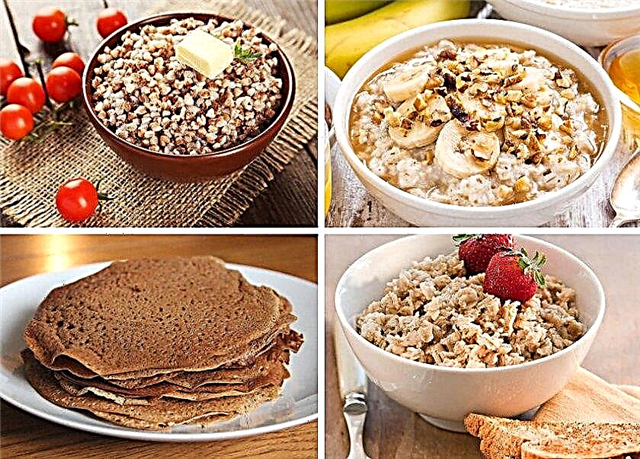
You also need to pay attention to the fact that eating is a common property of both cereals, but the differences are in the features of eating:
| Buckwheat | Oats |
| For those who adhere to the principles of raw food, this is a product that gives texture nutrition to granola, cookies, pies, crackers and other baked goods. It has an interesting nutty flavor that it conveys to any dish during cooking. It gets a richer taste when frying. Although buckwheat is more expensive, it is a relatively inexpensive source of high-quality protein. | Oatmeal is considered a great choice for breakfast, and is also used to prepare sweet and savory foods. Oatmeal is ideal for thickening soups and casseroles instead of flour. The taste of oats, in contrast to buckwheat, is more neutral. |

The main differences
From a botanical point of view, the two plants have little in common. So, buckwheat is obtained from the seeds of a flowering herbaceous plant - buckwheat sowing or ordinary (Fagopýrum esculéntum). It is often equated with cereals, but in fact it belongs to another family - buckwheat (Polygonaceae). Sowing oats (Avéna satíva) is a plant in the cereal family.
Important! There are also differences in storage. Due to the high fat content, it stores dried buckwheat in a sealed container, well protected from light, heat and moisture. Otherwise, fat decaying under the influence of the external environment will create a rancid taste in the product.
Agrarian features of both cultures:
| Buckwheat | Oats |
|
|

Chemical Comparison
It is worth considering the saturation of both cereals with vitamins. The values shown are percentages of the recommended daily dose. And since 100 g of the product are taken in equal portions, all indicators above 10% indicate a high content.
| Vitamin | Buckwheat | Oats |
| Thiamine (B1) Riboflavin (B2) Niacin (B3) Pantothenic Acid (B5) Vitamin B6 Folate (B9) Vitamin C | 9% - 0.101 mg; 35% - 0.425 mg; 47% - 7.02 mg; 25% - 1.233 mg; 16% - 0.21 mg; 8% - 30 mcg; 0% | 66% - 0.763 mg; 12% - 0.139 mg; 6% - 0.961 mg; 27% - 1.394 mg; 9% - 0.12 mg; 14% - 56 mcg; 0% |
As you can see, the vitamin composition of both cereals does not match. And we can safely say that the products have different properties, therefore, they will be equally useful for creating a balanced diet.

In a similar way, you can compare the mineral composition of both cereals:
| Minerals | Buckwheat | Oats |
| Calcium Iron Magnesium Manganese Phosphorus Potassium Sodium Zinc | 2% - 18 mg; 17% - 2.2 mg; 65% - 231 mg; 62% - 1.3 mg; 50% - 347 mg; 10% - 460 mg; 0% - 1 mg; 25% - 2.4 mg. | 5% - 54 mg; 38% - 5 mg; 50% - 177 mg; 233% - 4.9 mg; 75% - 523 mg; 9% - 429 mg; 0% - 2 mg; 42% - 4 mg. |
Important! It is not recommended to store buckwheat for longer than 2 months, and flour for longer than one month.
Buckwheat is richer in minerals than common cereals such as rice, wheat and corn. But comparing it with oats, we can conclude that the degree of mineral saturation in them is also different.

What is calorie
The calorie content of both products differs slightly. To verify this, just look at the table:
| KBZhU | Buckwheat | Oats |
| Calorie content Squirrels Fats Carbohydrates Cellulose Monounsaturated Fat Polyunsaturated fats Saturated Fat | 343 kcal; 13.25 g; 3.4 g; 71.5 g; 10 g; 1 g; 1 g; 0.74 g | 389 kcal; 16.9 g; 6.2 g; 66.3 g; 11.6 g; 2.18 g; 2.54 g; 1.21 g |
Buckwheat is mainly composed of carbohydrates. They represent about 20% of the composition of cereals by weight. Almost all carbohydrates are in the form of starches. Buckwheat contains a large amount of fiber, which the body does not fully absorb. And this property is very important for colon health. Once in it, fiber works like a broomstick and with it removes toxins from the body and accumulated toxins.
By weight, it is 2.7% of the composition of boiled cereals. A lot of fiber is in the husk, but since the groats are peeled, the flour made from buckwheat becomes the main source of fiber. And the darker the color, the more fiber in it.

Buckwheat contains a little protein. By weight it is 3.4% of boiled cereals. Due to its balanced amino acid profile, it is a protein of very high quality. It is poorly absorbed due to the presence of tannins in the product. Nevertheless, the protein is effective in lowering blood cholesterol, suppressing stone formation and lowering the risk of colon cancer.
Did you know? In Russian, the name of buckwheat comes from the word "Greece", as it was brought from Byzantium.
Buckwheat also has an average glycemic index (GI). This is a parameter that indicates how quickly food raises blood sugar after eating. GI of buckwheat grain is 55, and if it is boiled - 44. For whole oat it is 50, and for Hercules flakes - 55–60. Diabetics should be based on foods with an index of 10–44, but they can also eat foods with a GI of up to 55.

Useful properties for the body
Buckwheat is quite versatile and can be used for baking bread and gluten-free cookies. It is known as a product that can replace rice. It is also a good source of fiber, manganese, magnesium and copper. It is currently being studied for its health benefits for people with type 2 diabetes and people with high blood pressure.
Did you know? Buckwheat pillow is very useful. Air circulates between individual shells, thereby reducing the likelihood of overheating of the head, making your sleep more comfortable.
- Buckwheat benefits for the body:
- improved control of blood sugar - the product is considered safe for diabetics;
- contributes to the improvement of the cardiovascular system;
- may reduce the risk of heart disease by preventing blood clots and reducing inflammation;
- improves blood lipid profile;
- lowers blood pressure;
- prevents some types of cancer;
- helps digestion and constipation;
- strengthens the immune system;
- reduces the number of gallstones;
- improves bone health;
- prevents asthma and anemia;
- It can even be used as a substitute for meat, which makes it an excellent source of protein for both vegetarians and vegans.

- Health benefits of oats include:
- reduces the risk of coronary heart disease;
- lowers cholesterol;
- reduces the likelihood of developing colorectal cancer;
- supports a healthy weight;
- provides a feeling of satiety;
- beneficial effect on the gastrointestinal tract;
- improves immunity;
- reduces the risk of obesity and chronic diseases;
- reduces the likelihood of constipation;
- possesses anti-inflammatory and antipruritic properties when applied topically to the skin;
- contains a number of important antioxidants that are needed to lower blood pressure.

Possible harm and contraindications
Buckwheat is safe for most people. But if you are allergic to gluten, then you should not eat this cereal and products based on it. Some people are allergic to buckwheat husks. This is usually characteristic of those who, by occupation, have a lot of contact with buckwheat. An allergy in the form of a skin rash, a runny nose, asthma, a drop in blood pressure, itching, swelling, and difficulty breathing.
Oats can cause excessive flatulence and bloating. To minimize side effects, start by taking a small dose and slowly increase it to the desired amount. When the body gets used to process the product, the unpleasant symptoms will disappear. If you have trouble swallowing (for example, as a result of a stroke) or chewing due to a lack of teeth or poor prosthesis, then avoid eating oats. Poorly chewed, it can cause a blockage in the intestines.
 Avoid eating oatmeal if there is a malfunction in the digestive tract, including the esophagus, stomach, and intestines. These pathologies can increase food processing times and lead to intestinal malfunction.
Avoid eating oatmeal if there is a malfunction in the digestive tract, including the esophagus, stomach, and intestines. These pathologies can increase food processing times and lead to intestinal malfunction.
What is better for weight loss: buckwheat or oatmeal
Many people believe that grain is carbohydrates, and carbohydrates are a way to gain weight. But not so simple. Some grains help maintain ideal weight, while others even help with weight loss. The trick is to choose the right type of grain.
Grains have fiber and carbohydrates. Both that and another are necessary for normal functioning of an organism. The latter provide energy, and fiber is an assimilable carbohydrate that provides fewer calories in the finished product than it would if there were another carbohydrate instead of fiber. Such a product saturates faster and suppresses appetite, which makes it an excellent tool for weight loss.
Scientists have calculated that there are 8 grains that help lose weight, and 3 types that support optimal. Oats are the first in the list of those that reduce weight. He is able to absorb a lot of water, which means that the croup swells in the stomach, increasing the feeling of satiety. Buckwheat is the fifth on this list. It contains more protein than other grains. It has a lot of magnesium, which is important for regulating blood pressure. And, like other whole grains, it is a good source of fiber.Important! The same grain can have very different properties depending on how it was processed.
 Protein in whole grains is a key nutrient for building muscle in the body. And this contributes to weight loss, since muscle tissue burns more calories than fat.
Protein in whole grains is a key nutrient for building muscle in the body. And this contributes to weight loss, since muscle tissue burns more calories than fat.
Which diet is more effective
Remember that grain and flour, which is obtained from it, have different properties. Flour provides weight gain. The same property can boast: bread, bagels, crackers and chips, i.e. products based on crushed grain. And this is easy to see. You can probably eat 3 slices of bread at a time, but it’s unlikely to overpower 3 plates of buckwheat. Therefore, choosing a diet, focus on the use of whole grains and exclude flour products and products cooked by frying.
What porridge is best for weight gain
When it comes to weight gain, you need to include in your diet components that are both nutritious and high in calories. Resist the temptation to choose foods based only on calories, as although you gain weight, you end up eating too much sugar and saturated fats. Treat any porridge like a base canvas. For example, oats are known for their dietary properties.
Did you know? Buckwheat — excellent honey plant. One acre of buckwheat field provides the production of 70 kg of honey.
Add to it natural milk and in the resulting porridge will be:
- 50 g of oats;
- 300 ml of whole milk;
- 372 calories
- 15 g of fat.
 Add nuts, dried fruits or honey to the plate and there will be even more calories. Therefore, in order to gain weight, you need to eat any grain with the addition of milk and other high-calorie ingredients.
Add nuts, dried fruits or honey to the plate and there will be even more calories. Therefore, in order to gain weight, you need to eat any grain with the addition of milk and other high-calorie ingredients.
Eating both buckwheat and oat is good. And since their composition is different, in order for the nutrition to be balanced, you need to make it as diverse as possible, including all types of cereals.

